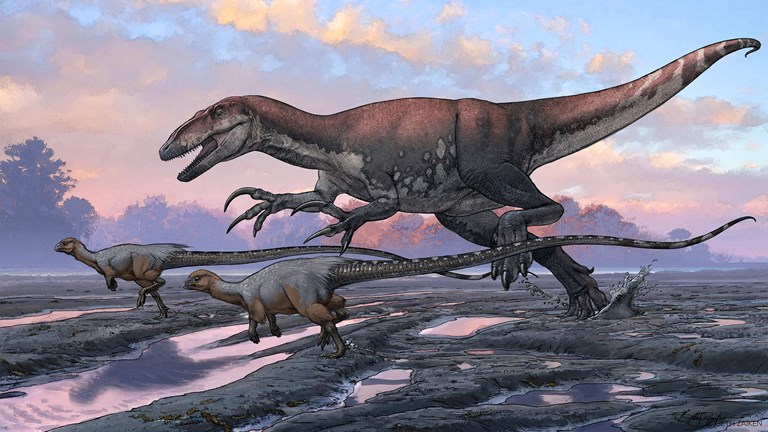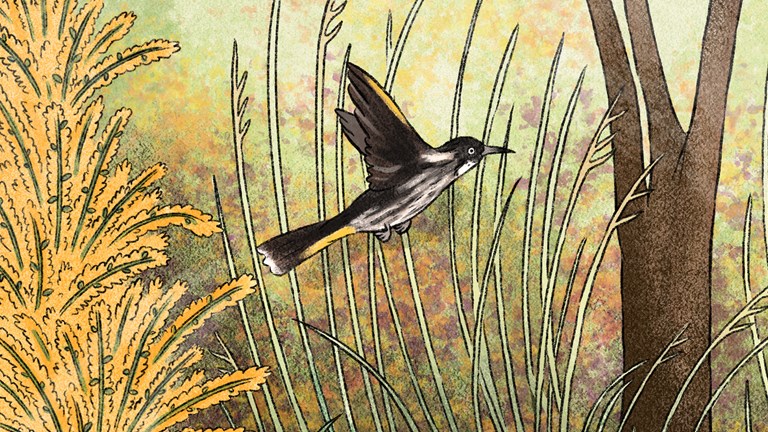Who lives in this cave?
Pack your bags for an expedition into the Pleistocene. Here’s your chance to solve a palaeontological mystery.
Something is missing from the illustration below, created by palaeoartist Beth Zaiken. Can you piece together the clues to figure out who lived there?
Palaeontologists don’t just learn about the past by studying fossils. They also look for other evidence left behind by ancient creatures. This can include clues to where they lived, what they ate, and how they walked or raised their young.
Can you collect the clues to discover who lived in this cave?









